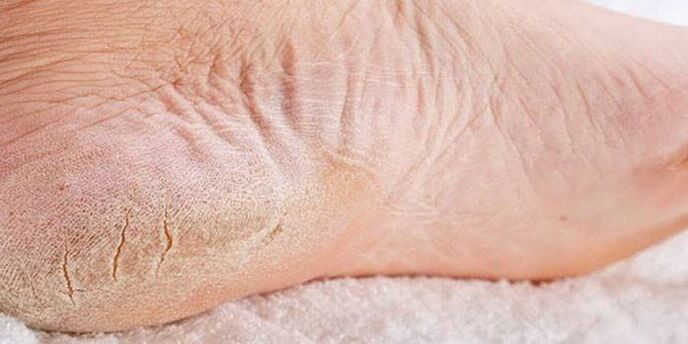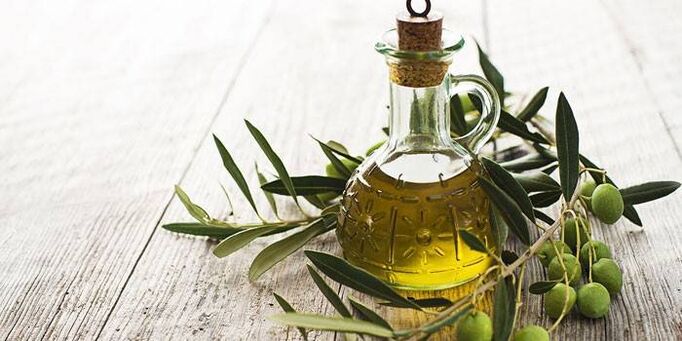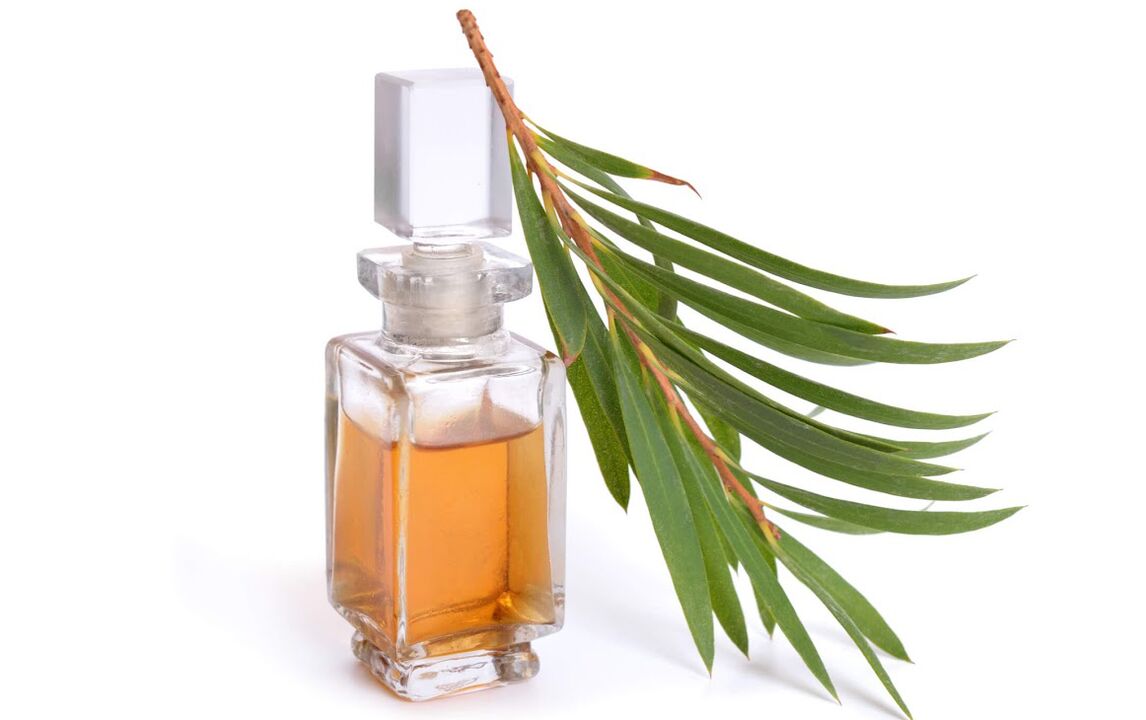One of the most common symptoms of feet and toenails is fungus. The treatment of this disease takes a long time because it is not easy to get rid of fungal infections. In addition to drug treatment, folk remedies are also used, which can achieve good results even in advanced cases. In the early stages of the disease, you can use natural recipes to cure the infection at home.
What is foot fungus and the route of infection
Mycosis or dermatomycosis is an infectious disease of the skin of the legs, the area between the fingers, the fingers, and the nails. The main fungal infections of the feet occur in cultures that are used to wearing closed shoes most of the time. More commonly, this disease affects the elderly and people whose immunity is reduced due to any serious pathology (immune deficiency, pemphigus, diabetes, circulatory disturbances in the limbs, etc. ).
The pathogens of fungal infections are parasitic in the stratum corneum of the skin. They produce enzymes that break down keratin. Their cell walls (membrane) contain mannan substances, which can inhibit local immunity and promote the development of chronic inflammatory processes in the skin. Among the many pathogens of fungal diseases, there are mainly Trichophyton rubrum, Trichophyton mentagrophytes, and Epidermophyton floccosum.
You can get fungus in two ways: directly or indirectly. Several versions of the first infection variant are available:
- Close contact with patients;
- Contact with infected animals;
- Through plants in contact with shoe soles;
- The soil through which pathogens survive.
The indirect infection route of foot fungal disease:
- When using household items or personal hygiene items belonging to the patient;
- When using items that have been touched by an infected animal.
Symptoms of the disease
According to the type of fungus, the specific symptoms of the disease can be distinguished. For example, for a long period of time, dermatophytes will not appear in any way and will penetrate deeply into the skin layer or under the nail bed. If the pathogen of the fungal disease is trichophyton, then the signs of infection will appear immediately-a yeast-like microorganism can cause inflammation on the nails and skin, destroying the tissue in a short time. Even an experienced dermatologist can hardly determine which type of infection a patient has without laboratory tests.
In the early stages of the disease, foot fungus has common symptoms:
- There are cracks in the sole;
- Itching, burning, dryness, peeling skin;
- Unpleasant foot odor;
- Discoloration and brittle nails;
- Shiny skin surface;
- Thickening and redness of the epidermis;
- Increase the sensitivity of the sole;
- Liquid-filled bubbles appear at the site of inflammation.

Forms of fungal infections
The external appearance of fungi depends not only on the type of pathogen, but also on the involvement of the skin, nails, and leg hair in the inflammatory process. Dermatologists distinguish the following forms of foot mycosis:
- Scaly (scaly). Redness and peeling of the skin were observed in the initial stage. The affected area has different areas.
- Hyperkeratosis stage. The sole is severely rough, and deep cracks appear in or near the heel. Both legs are affected at the same time.
- Alien. It is considered the most common. Affects the area between the 4 to 5 toes, and rarely occurs between 3 and 4. The cracks were replaced by erosion, and the erosion began to become wet, itchy, and burning. Streptococcus penetrates into the loose structure of tissues, causing pustular inflammation.
- Sweat form. The blisters appearing on the epidermis merge. After they are hidden, extensive ulcers will form. The fungal disease spread to the hands.
Treat foot fungus with folk remedies
All folk remedies for foot fungi have several tasks: destroy fungal mycelium, eliminate inflammatory symptoms, restore skin integrity, increase local immunity, and prevent disease recurrence. For these purposes, decoctions and infusions for oral administration, as well as solutions, ointments and dressings for external use are used.
Many plants, minerals, compounds (copper sulfate) and even gunpowder have antifungal properties-scientific research has proved this. More than 1, 000 representative names of plant groups with significant fungicidal and antifungal effects have been identified. The components of this type of plant include benzoic acid and salicylic acid, furanocoumarin, novoimanin and other substances that have a therapeutic effect on fungal infections.
Treatment rules and principles
Before starting to self-treat foot fungus with folk remedies, you need to consult a doctor to prevent the pathology from developing further. It is very difficult to cure an advanced form of mycosis, so if it does not show up for a few days after you start using one or another positive motivation method, then you should consult a doctor.
There are many popular recipes based on the use of herbs and natural ingredients. It is recommended that foot fungus be treated at home before going to bed to allow time for the medicine to take effect. No matter which method you choose to remove fungal diseases, you need to follow the basic rules: not only do the treatment until the symptoms disappear completely, but also for a period of time. During treatment, it is necessary to:
- Follow a low-sugar diet in the diet, that is, remove sweets and starchy foods from the daily menu;
- Eliminate the use of cosmetic varnishes, which creates a good environment for the reproduction of pathogenic bacteria;
- Regular iodine treatment of nail plates affected by fungal infections (onychomycosis);
- Disinfect floor coverings and footwear to prevent recurrence.
Foot Mycosis Foot Bath
In the early stages of the disease, a therapeutic foot bath is very helpful in relieving symptoms. Traditional medicine provides many ingredients for performing these treatments. These are decoctions and infusions of herbs (celandine, wormwood, yarrow, oak bark, etc. ), vinegar, soda water, and other ingredients. Use a tray to fight the infection every day, soak your feet in a freshly prepared warm solution for 15-20 minutes.
The average treatment course for adults is 2 weeks, but if necessary, the procedure can be performed for a longer period of time. Not only does a foot bath help prevent the growth of fungi, it also removes unpleasant odors and eliminates excessive sweating on the feet. With proper lower extremity hygiene, positive effects will become apparent within a few days after the start of treatment. Examples of trays that are easy to make at home to remove foot fungus:
- Take 3 warm water and stir 200 grams of sea salt in it. To increase efficiency, you can add cinnamon powder (1 tablespoon), chamomile or pine needle decoction (250 ml).
- Pour warm water into a basin, add 50 ml table vinegar or apple cider vinegar and some potassium permanganate particles. After the operation, lubricate the affected skin with tea tree oil.
Compression and lotion
In the home comprehensive treatment of foot mycosis, it is recommended to use dressings or lotions. For these procedures, use celandine oil, garlic, onion, alcohol tincture, iodized salt, and mint. Apply kombucha, pumpkin pulp, and fresh burdock leaves to the sore area. Crush the selected substance and apply it to the area between the toes and on the foot for 40-50 minutes, and then wrap it in a plastic bag (plastic wrap). The course of treatment is 1-2 times a day until complete recovery.
Essential oils and natural pastes
Use natural plants and essential oils to effectively treat foot fungus at home. Tea tree extract (to soothe the skin and eliminate itching), lemon (to strengthen nails and improve local immunity), cinnamon (to prevent fungal reproduction), and rosemary (to regenerate tissue) have proven their excellent effects. An effective natural antiseptic lavender oil has analgesic and wound healing effects, so it can eliminate the symptoms of fungal diseases faster than other folk remedies.
You can use pure essential oils (allergy tested) or mix a few drops with any vegetable oil (coconut, cocoa, olive, jojoba oil) to make a natural paste. The operation needs to be performed 3 times a day for several weeks. If the nail is affected by foot fungus, this treatment will continue until the plate is completely renewed (a few months).

Herbal decoctions and tinctures
The popularity of herbs in the treatment of fungal infections is due to their effectiveness and availability. Herbs are used not only to remove fungi, but also to prevent infections. The main methods for treating mycosis at home are tinctures (soaking medicinal materials in alcohol), decoctions (heating medicinal materials in a steam bath to keep them from boiling) and infusion (pour medicinal materials into boiling water and inject it).
The method and duration of treatment depend on the age of the patient, the severity of accompanying diseases and symptoms. Average use time: 2-3 times a day for 14-30 days. The most effective antifungal herbs for treating fungal infections are:
- Birch bud
- Cold mint;
- Aloe;
- eucalyptus;
- Walnut leaf
- Chamomile medicinal;
- Japanese Sophora japonica
- Puppet master
- Celandine;
- Run Nick;
- Longevity flower;
- Common juniper.
How to treat foot fungus at home
Traditional methods of removing fungi have proven to be effective. In order to forget foot fungus forever, it is necessary to take proper care of the foot area during and after treatment. In order to recover quickly, you need:
- Dry the skin thoroughly after bathing;
- Only wear dry and clean shoes;
- Do not overheat your legs and avoid excessive sweating;
- In warm weather, wear open-toed sandals;
- Wear socks made of natural fabrics with high breathability and moisture absorption;
- Always wear personal slippers when bathing in public places.
Convenient tools and products in the kitchen
It is easy to find folk remedies to eliminate fungi at home. Every housewife has some kind of cure for fungal diseases among the tools available in the kitchen or refrigerator. The most affordable:
- coffee. In this case, aromatic beverages are used for external use. Soaking your feet regularly with freshly brewed espresso will help cope with this disease.
- garlic. There are many options for using this plant, but the simplest is garlic juice, which is applied to the affected tissue. This process is performed 3 to 5 times a day with a cotton swab until the symptoms disappear.
- onion. Fresh onion porridge must be put in a plastic bag and worn on your feet. The edges of the bag must be fastened so that the bow does not touch the sole and the legs are in the impromptu steam room all night. Usually, 5 courses are sufficient to remove foot fungus.
Pharmacy Traditional Medicine
If you don’t have time to find a medicine for foot fungus at home, you can buy an effective medicine from a natural source at a pharmacy. Among them:
- potassium permanganate. This medicine, commonly known as potassium permanganate, can effectively treat fungal diseases. In order to solve this problem, it is necessary to apply a compress soaked in potassium permanganate solution on the leg every night until the problem disappears.
- iodine. The skin area affected by the fungus is treated with a 5% alcohol solution twice a day. The contraindications of this treatment are the high sensitivity of the skin and the individual's intolerance to the ingredients.
- Iodohydrin. For onychomycosis, use a universal blue solution to soften nail plates that have become very rough. Iodophor is used to wipe tissues affected by fungal infections 2 to 4 times a day.
- Propolis. For the treatment of fungal diseases, alcohol tinctures are usually used. You can make your own solution by adding vodka or alcohol to the propolis, but this will not affect the effect. For the treatment and prevention of fungi, you need to use a cotton swab soaked in tincture, apply it to the infected area, and wait for it to dry 1-2 times per day.
- ammonia. One tablespoon of the product should be diluted in a cup of distilled water, and the resulting solution should be soaked in the fabric, wrapped around the feet, fixed with tape, and compressed at night.
- Boric acid. For anti-fungal treatment, you need a powder, which is steamed and sprinkled on your feet in the correct amount, and then put on socks. The procedure is carried out every night. The boric acid is left overnight.
Herbs for treating foot fungus
Some plants are a natural antibiotic, while others have complex effects on the affected area. For the treatment of fungal diseases, poisonous herbs are often used, and their intake is unacceptable. The destruction of the membrane cells of pathogenic fungi is due to the presence of an aggressive plant environment, leading to rapid neutralization of the pathology. Powerful herbs include:
- Black nightshade
- Ceremica
- Male fern
- Melanization of low back pain.
Effective folk remedies for treating foot fungus
In order for folk remedies for fungal diseases to be helpful, the treatment process should be properly arranged. Before starting any procedure, you need to steam your legs, cut off overgrown nails, grind loose tissues, and remove rough and dead skin. Only in this way can folk recipes be successfully applied. Natural ingredients not only completely eliminate fungal infections, but also restore health to nails and skin. The most effective folk remedies should be discussed in more detail.
Garlic compression
An ancient home remedy for foot fungus is garlic compress. The effectiveness of this simple and affordable method is attributed to the botanical ingredients. In addition to vitamins, carbohydrates and protein, garlic also contains ascorbic acid, which is harmful to harmful microorganisms. You should be aware that if you use garlic dressings unwisely, you may burn your skin. For this reason, in the course of treatment, the dosage and duration of treatment must be strictly adhered to. Garlic compression recipe:
- Melt 50 grams of butter, add 1 head of minced garlic, 2 tablespoons. Lake coarse rock salt and mix thoroughly;
- Spread the resulting mass on sterile gauze evenly, and then spread it on the affected area for 1 hour;
- Perform compression therapy several times a day to keep the limbs immobile during the operation;
- The recommended course of treatment is 1 month.
vinegar
You can use any vinegar to fight fungal diseases: wine, apples, rice, malt or sugar cane. The working principle of vinegar is to penetrate its substance into the infected tissue and destroy the cell membrane of the fungus. Fungal diseases will not develop under the influence of acidic environment, because the pathogenic microbial communities die under its influence. In the initial stage of treatment, a low concentration of vinegar (starting from 3%) should be used and gradually increased.
Before using this method of treatment, you need to check the infected area of the skin for abrasions and cracks, so as not to cause epithelial inflammation or chemical burns. If they are not there, then you can start using vinegar compresses:
- Stir 2 tablespoons until smooth. Lake nine percent vinegar, 1 tablespoon. Lake glycerin and 2 tablespoons. Lake Vodka;
- Dip the bandage piece into the finished mixture and apply it to the positioning part;
- After the dressing is dry, remoisten the bandage in the mixture;
- The time of using the compressed package should not exceed 1 hour/day;
- Course duration-2 weeks.
baking soda
Baking soda at home has a good effect on foot fungus. In the first suspected fungal infection, it is necessary to use sodium bicarbonate (sodium bicarbonate), which can reduce the acidity of the epidermis. In addition to its bactericidal effect, baking soda can also soften the skin and nail plate, making it easier for the drug to penetrate after use. Under the influence of alkali, the affected tissue becomes more susceptible to any other treatments.
For fungal diseases, soda water can be used dry, diluted with water, and combined with other natural or unnatural ingredients. For onychomycosis, soda cream will be more effective. To prepare it, you will need:
- 3 tablespoons. Mix 1 tablespoon with lake soda water. Lake water until a thick and uniform substance is obtained;
- Then apply soda paste on the affected nails to avoid contact with the skin;
- Afterwards, the substance must be acidified with freshly prepared lemon juice, which will immediately react with soda water;
- You must remove the solution and wash your feet with soap 5-7 minutes after use;
- This procedure is carried out every day before going to bed until the nail condition improves.
Tea tree oil
In dermatology, tea tree oil has been used for more than ten years because it has become a highly effective drug for the treatment of skin diseases. The natural components of the essential liquid determine its cytotoxic activity, that is, its ability to fight pathogenic microorganisms. Treatment options will vary depending on whether the infection is skin or nails.
If you put 1 drop of tea tree oil on the affected area every day, you can heal the nail plate. It takes about 2 months to fully restore and strengthen the nails. It is best to use the diluted extract for sole treatment. To do this, you need to mix vegetable oil (3 parts) with essential oils (1 part), shake well, and apply to the skin 2-3 times a day for 1. 5 months. It is best to standardize the treatment process with the doctor. Clove essential oil can be used as an analog.

hydrogen peroxide
In the process of fighting fungal infections, hydrogen peroxide helps, and it is considered the best antiseptic with significant antibacterial effects. The drug is widely used in medicine and family to treat fungal diseases. Hydrogen peroxide does not accumulate in the body, so any allergic reactions are ruled out. For fungal diseases, bathing is effective, which helps soften the affected epithelium so that the antifungal gel, ointment, cream or spray prescribed by the doctor will flow further.
It is easy to make a hydrogen peroxide foot bath at home:
- Pour warm water into the basin and add 3% of the preparation at the rate of 100 ml per 2 liters of water;
- Put your feet in the container and keep it for 20 minutes;
- In order to keep the solution from cooling, a small amount of boiling water needs to be added;
- After surgery with pumice stone, remove the softened tissue;
- Use a sponge to remove moisture and apply the prescribed medication on the skin surface;
- Bathe every day until the condition improves.
Laundry liquid or tar soap
For more than ten years, people have cured fungal infections with the help of tar or laundry soap. By following the rules for treating affected skin, you can quickly get rid of itching and unpleasant foot odor. To speed up tissue healing, you need to combine soap with salt or iodine. The following recipes will help improve blood circulation in the tissues:
- Steam your legs with warm water before going to bed;
- Then use laundry soap to foam thoroughly;
- Treat soapy feet with a towel, then pumice;
- Then wipe it dry and apply cream;
- Treat fungal infected areas with birch tar;
- Soak for 1. 5 hours, then remove with cotton pad;
- Put clean socks on your feet and do not take them off for two days;
- Repeat the procedure once a week until the problem is eliminated.
Salicylic acid ointment
The main advantage of salicylic acid ointment to treat fungal diseases is its high antifungal activity. The drug can kill pathogens, prevent their reproduction, eliminate the keratinized layer of the epidermis, and rarely cause side effects. For leg fungal disease, apply salicylic acid ointment in the form of a compress. On the softened skin or nail plate, apply a thin layer of the drug with a concentration of 5% or 10%, then put the leg in a plastic bag, and then put the socks on it. This procedure lasts 1 hour twice/day for 10 days.
Propolis
As mentioned earlier, the propolis used for fungal diseases is effective as a tincture. Alcohol also has a positive effect on pathogenic microorganisms. Ointments can be prepared with beekeeping products, and the affected area must be rubbed overnight for 10-14 days. Its formula is very simple:
- Mix 20 grams of broken propolis (without wax) and 100 grams of sea buckthorn oil;
- Heat the ingredients in a water bath for 30 minutes;
- Cool the mixture, filter it through cheesecloth, and use as directed.
Celandine and Chamomile
It is believed that herbs, especially chamomile and celandine, can get rid of fungal infections the fastest. It is best to use them together. For quick results, you need to drink chamomile soup or tea (to improve overall immunity) and bathe with celandine infusion. You should know that the fresh juice of the latter is burning, so use it in pure form with extreme caution.
For infusion, the stems of the dried plants need to be crushed. You need to brew 1 tablespoon in a cup of boiling water. Lake celandine, let stand for 1 hour, and then dilute with a little hot water. For fungal diseases, the solution is used in a therapeutic bath for 15 minutes a day. Usually, this treatment can relieve the initial stage of the disease within 14 days.
Calendula infusion
The flowers of this plant contain a lot of biological substances and have a strong antibacterial effect. Especially fast, the infusion of calendula can deal with onychomycosis. Before using the medicine, the nails must be steamed and processed. After mechanically cleaning the nail plate from fungal plaques and dead tissue, it is necessary to moisten a cotton pad in the infusion and apply it to the affected area. This procedure is carried out every day and lasts 4-8 weeks. It is easy to prepare products at home:
- Pour a cup of boiling water more than 1 tablespoon. Lake dry or fresh marigolds;
- Insist on not soaking in the water bath for 10 minutes;
- Cool, strain, and store at a temperature not exceeding 4°C.

attention! The information provided in the article is for reference only. The material of the article does not need to be processed by itself. Only qualified doctors can diagnose and give treatment recommendations based on the individual characteristics of a specific patient.

























